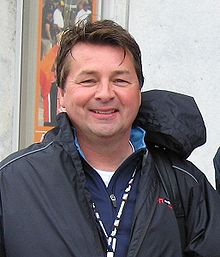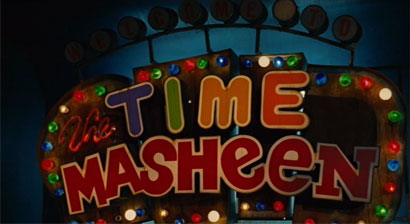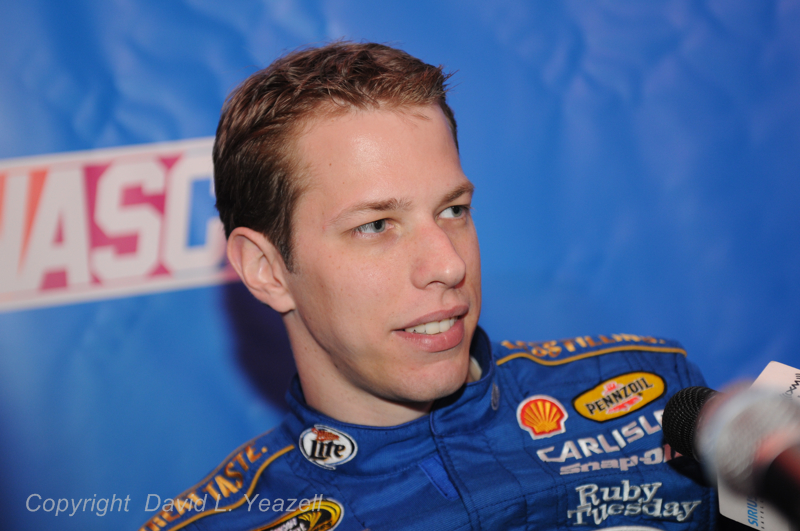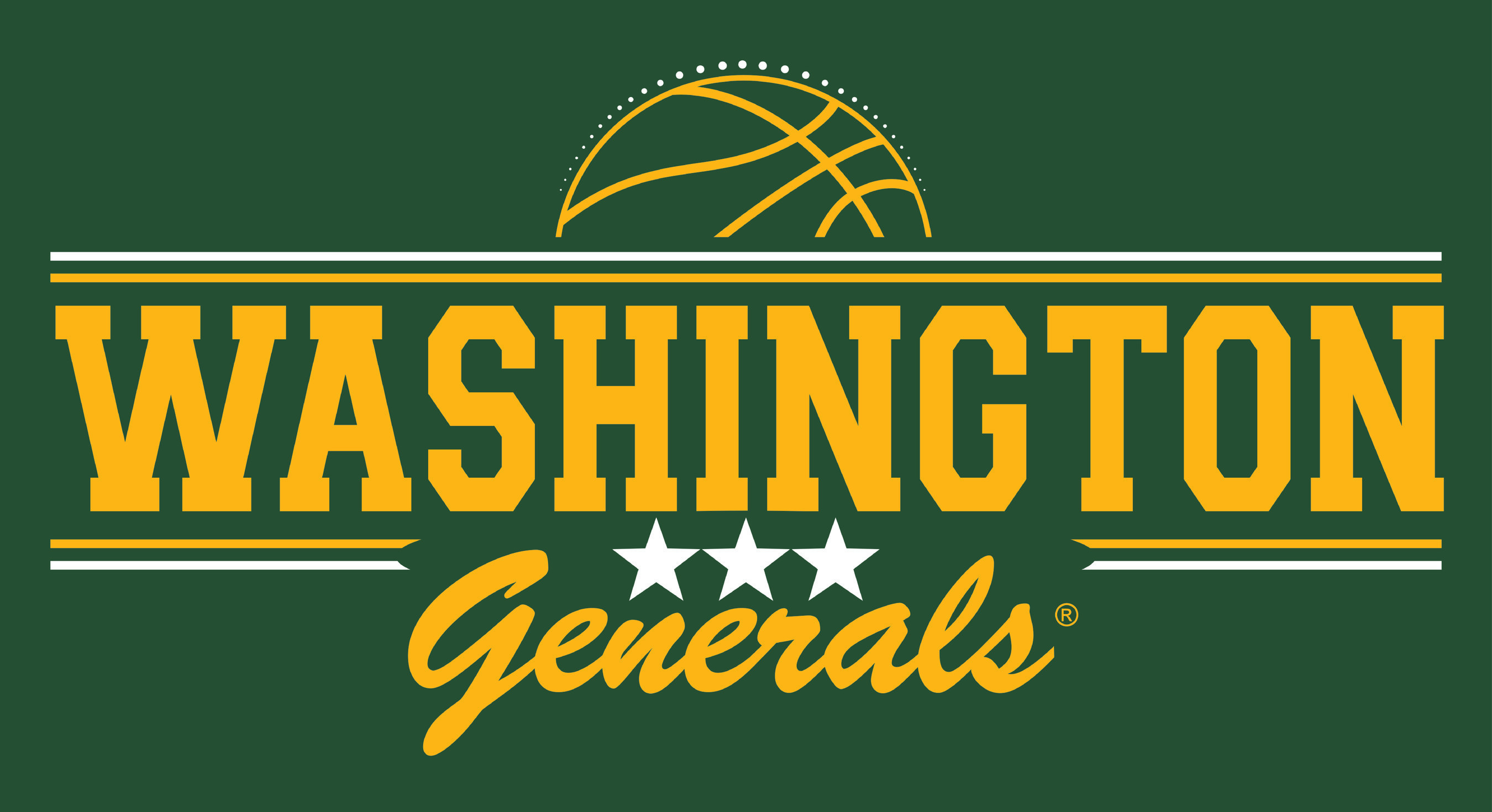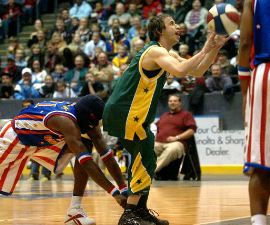It’s a common complaint about “stick-and-ball” sports that you hear more about superstars in the police reports than the sports pages. It’s said that Nascar isn’t your average sport, and in this respect it’s definitely true—you’re more likely to see the OWNERS in legal trouble than the drivers. From fly-by-night operations to championship-teams, from Nascar lifers to those who seemingly disappeared after a year or two, plenty of team owners have spent time behind bars (or barely avoided it).
Here is the first (to my knowledge) list of Nascar team owners who have had legal problems or have left their drivers and crew in the lurch monetarily. NOT listed are team owners who had individual run-ins with the law that seemed to have no impact on their teams. Call it the Nascar Team Owner Hall of Shame.
 |
| Dale Jarrett passes Johnny Benson for the lead at the Daytona 500, Tyler Jet Motorsports' finest moment |
Tim Beverley—Tyler Jet Motorsports
THE GOOD: Tim Beverley made his fortune in the aircraft sales world, then turned his attention to Nascar in 1998. Beverley first purchased Darrell Waltrip’s race team, then combined it with ISM Racing (see below). After an unremarkable year in 1999 with David Green, the team stunned the Nascar world by leading late in the 2000 Daytona 500 with driver Johnny Benson and a last-minute sponsor in Lycos.
THE BAD: The Lycos “sponsorship” was soon revealed to be a complicated online advertising deal, one that would see the team remove Lycos from the car for non-payment. Beverley wound up selling the again-unsponsored team to a partnership of MB2 Motorsports and new sponsor Valvoline.
THE UGLY: Beverley was indicted on 29 counts of bank fraud and money laundering, spending almost five years in federal prison. These charges were related to his airplane business dealings, which reportedly also included ties to a Mexican cartel. Beverley has returned to the airplane business since his release.
 |
| Donnie Allison in a DiGard-owned (and sponsored) car |
Mike DiProspero and Bill Gardner—DiGard Motorsports
THE GOOD: Running from 1975-1986, the brothers-in-law had a slew of wins from drivers such as Donnie Allison, Darrell Waltrip, and Bobby Allison, with whom the team would win the 1983 Winston Cup championship.
THE BAD: Despite sponsorship from companies such as Gatorade and Miller Brewing, the team was notoriously late and short at paying its bills. Both Donnie Allison and Waltrip complained that they weren’t being paid, and a deal to supply engines to the new Curb Motorsports devolved into litigation.
THE UGLY: Less than a year after winning the championship, the team lost driver Bobby Allison, who took sponsor Miller with him to Stavola Bros. Racing. The team limped along for two more years before finally dissolving midway through 1986.
George Gillett—Evernham Motorsports/Richard Petty Motorsports
.jpg) |
| Reed Sorenson (43) essentially raced for no pay near the end of his single season with RPM, while Elliott Sadler (19) was forced to sue to keep his ride |
THE GOOD: George Gillett made his first fortune through such diverse holdings as the Harlem Globetrotters, TV stations, ski resorts, and meat packing plants. After losing most of his empire in a junk bond market crash, Gillett made a second fortune concentrated on meat packaging before turning his attention to sports, buying the Montreal Canadiens of the NHL, English soccer power Liverpool FC, and Evernham Motorsports, combining it with the remnants of Petty Enterprises to create Richard Petty Motorsports (in which Gillett, despite the team’s name, was the largest shareholder).
THE BAD: The global recession hit Gillett’s finances hard, and he defaulted on a $90 million loan he used to buy into Evernham/RPM. Embarrassingly, the RPM cars were impounded by creditors late in the 2010 season, with the team operating on a day-to-day basis on the brink of bankruptcy. After barely surviving the season (mostly due to Richard Petty re-taking control of the team), RPM was bought-out by a partnership of Andrew Murstein, Douglas Bergeron, and Petty himself.
THE UGLY: Gillett has disappeared from the public eye since his sports empire collapsed. He remains persona non grata in the Nascar world, and is one of the most-hated owners in English soccer history.
 |
| Two Ginn cars on-track--neither of which would survive the year |
Bobby Ginn—Ginn Racing
THE GOOD: Bobby Ginn got his start in Hilton Head, South Carolina, developing luxury resorts and making enemies along the way (“Honk if Bobby Owes You Money” bumper stickers were rife in the area in the 80’s). In the go-go 90’s Ginn re-emerged on a national scale, developing massive golf resorts and communities across the country. Before the 2007 season, Ginn bought the former MB2 race team, making wholesale changes to the driver and sponsor lineup. Things started with a bang as part-time driver Mark Martin nearly drove the Ginn 01 car to victory lane in the Daytona 500, losing to Kevin Harvick by a few feet.
THE BAD: By mid-season Ginn’s teams were in hot water, with the 13 car shut down due to lack of sponsorship, and the 14 team shuffling drivers for the same reason—this despite the fact that the team SEEMED to have close-to-full sponsorship at the start of the season. Around the Brickyard 400, the team found a lifeline by merging with DEI, upon which the 01 was (essentially) the only car to survive. In an ominous allusion to the past, a plane flew over the fall race at Charlotte towing a banner reading: “How Much Does Bobby Ginn Owe You?”
THE UGLY: The eventual merger of the revamped DEI with Ganassi Racing would see Bobby Ginn bow-out completely as a team owner. Although his mansion was foreclosed upon in 2014, he has re-emerged developing a massive resort in the Bahamas.
THE GOOD: Gene Haas was an engineer-turned-marketer, making his fortune in the high-tech world of CNC machines. Originally entering Nascar as a sponsor at Hendrick Motorsports, Haas formed his own team, Haas CNC Racing, in late-2002. Despite strong sponsorship, a state-of-the-art race shop, and Haas’s own considerable financial backing, the team was an also-ran until partnering with driver (and new co-owner) Tony Stewart prior to the 2009 season, starting the team on a path that would lead to a pair of championships.
THE BAD: Haas was arrested in 2006 by the IRS for a litany of tax-related crimes. After reaching a plea bargain, Haas pled guilty to conspiracy to commit tax evasion, serving 16 months in federal prison and paying $75 million in penalties.
THE REBOUND: Haas’s team in prison did little to slow Stewart-Haas Racing’s progress, as the team has since grown to four full-time teams in the Sprint Cup Series. Furthermore, Haas has independently started his own Formula One team as well.
 |
| After relaunching the team, Darrell Waltrip ran a Chevy at the Brickyard 400. Despite a solid run, Tabasco execs were furious that a driver AND manufacturer change had been made without their input. |
Bob Hancher—ISM Racing
THE GOOD: Hancher’s ISM Racing team lasted less than a year in Nascar, being started, raced, sold, and merged over a period of twelve months from mid-1997 to mid-1998. Arguably the team’s greatest accomplishment in Nascar was the securing of Tabasco as a full-time sponsor. The team also ran in IRL.
THE BAD: Hancher sold his team midway through its lone season to fellow Hall of Shame member Tim Beverley, leading to the infamous “Tabasco Fiasco” which saw the hot sauce giant leave the sport. Hancher disappeared from the Nascar world.
THE UGLY: Years later, Hancher ran into simultaneous legal issues in 2010-2011. He was forced to pay almost $3 million in restitution in a civil fraud case involving a number of companies of which he served as an executive. Meanwhile, investigation continued into a mysterious fire that destroyed his home. Hancher was eventually sentenced to eight-plus years in federal prison stemming from a criminal indictment related to his civil case.
“Angela Harkness” & Gary D. Jones—Angela’s Motorsports
 |
| Mike McLaughlin with his intended ride for the 2003 season |
THE GOOD: There’s not much good to say about what is arguably Nascar’s biggest ownership scandal. Fatemeh Karimkhani, under the name Angela Harkness, was a stripper with a mysterious background who partnered with her lover, the married (not to her) Gary D. Jones of Wells Fargo. The two hatched a scheme to start a Nascar Busch (now Xfinity) Series team, entering two cars in the 2002 finale as a warm-up for a full run in 2003. Mike McLaughlin was hired to drive, Harold Holly was hired to crew chief, and the team appeared to have sponsorship from Wired Flyer, an online travel agent. In pre-season testing for 2003, McLaughlin was fastest.
THE BAD: The team’s checks started to bounce, and most of the blame was placed by Harkness/Karimkhani on the owners of Wired Flyer, who, in turn, claimed they were not the primary sponsor, but merely an associate who had fulfilled their financial obligations. The team’s main creditor, Robert Yates Racing, confiscated their equipment and the two owners disappeared. McLaughlin was able to run the first race of the season with help from fans and Darrell Waltrip, but his career essentially ended.
THE UGLY: Jones was quickly found and was found guilty of bank fraud, sentenced to three-plus years in jail. Harkness/Karimkhani fled the country but was found in Dubai, returned to the US, and eventually sentenced to three-plus years as well.
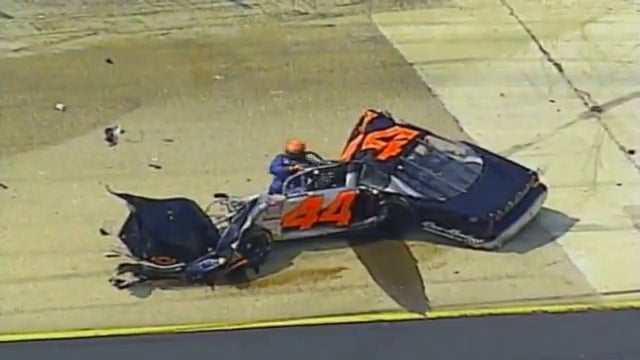 |
| Harmon's infamous wreck at Bristol |
Mike Harmon—Mike Harmon Racing
THE GOOD: An independent owner-driver, Harmon has raced primarily in the Busch/Nationwide/Xfinity Series, frequently running his own equipment. Other than an aborted attempt at Cup racing for Junie Donlavey in 1999, Harmon’s most-notable moment was his vicious practice crash at Bristol in 2002.
THE BAD: Harmon was arrested in 2013 for being the “point man” in the theft of racing equipment from Jennifer Jo Cobb. Complicating matters was the involvement of Dave Novak, a former business and romantic partner of Truck Series racer Jennifer Jo Cobb.
THE UGLY: Upon finding the missing equipment at Harmon’s garage, Harmon turned himself in, although still claiming his innocence. Later, Cobb asked that the charges against Harmon were dropped, which they were, and all involved have seemed to move on.
Rick Hendrick—Hendrick Motorsports
 |
| Geoff(rey) Bodine driving the then- All-Star Racing car to its first win-- the following year the team would change its name to Hendrick Motorsports |
THE GOOD: One of the most-celebrated owners in Nascar history, Hendrick entered the sport in 1984, almost immediately winning races. With the financial backing of major sponsors and his own extensive auto dealership network, Hendrick built his team into a Nascar juggernaut, fueling the careers of champions such as Jeff Gordon, Jimmie Johnson, and Terry Labonte.
THE BAD: In 1996 Hendrick’s empire came under siege, as he was charged with mail fraud for bribing Honda executives to receive preferential treatment in the disbursement of the popular cars. Sick with Chronic Myelogenous Leukemia, Hendrick avoided jail time by plea bargaining down to a $250k fine and 12 months of home confinement, during which he was prohibited from having any contact with this race team or auto dealerships.
THE REBOUND: Both Hendrick’s business and motorsports interests continued to flourish before and after his sentence—during which his leukemia went into remission. His team has remained one of the premier organizations in motorsports ever since.
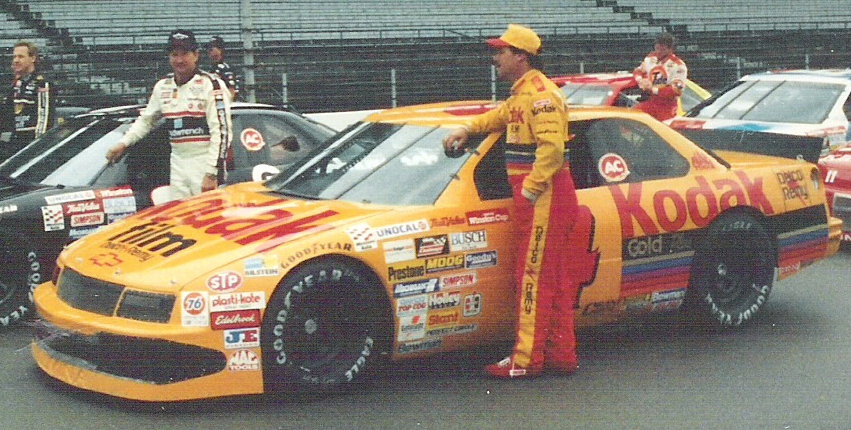 |
| Ernie Irvan at an Indianapolis Motor Speedway tire test for MMM |
Larry McClure—Morgan-McClure Motorsports
THE GOOD: Business partners Tim Morgan and Larry McClure launched their Cup Series team in 1983. They steadily grew into a race-winning operation, famously winning three Daytona 500’s.
THE BAD: The team’s struggles began with an ill-fated move to Pontiac in 2003. The following year the team lost long-time sponsor Kodak and was forced to make-due with mid-level sponsorships and second-rate equipment.
THE UGLY: In 2009 McClure pled guilty to a number of tax-related crimes, namely for filing a false tax return and then lying during the investigation. He was sentenced to 18 months in federal prison and the team officially shut down shortly afterwards.
THE GOOD: Self-styled self-made millionaire Alex Meshkin (a 20-something who claimed he’d made a fortune day-trading, then dabbling in the tech sector) partnered with Larry McReynolds to start one of the first Toyota teams in Nascar in 2004. The Truck Series team—named Bang! Racing—tallied two wins in it’s first (and only) season.
THE BAD: Early into the team’s lone season in Nascar, Meshkin’s partners (specifically Larry McReynolds) were growing impatient with the team’s seemingly-endless cashflow problems. McReynolds left the team midway through the year, and it took intervention from Nascar itself to stop Toyota from cutting the team’s manufacturer funding. Shortly afterward, McReynolds commented that, “There's been 50 owners who have come through this sport and haven't made it. Alex Meshkin is No. 51.” (Meshkin later showed up at a race with a t-shirt that had a “51” with a slash through it). Rumors of a move to the Busch Series (with Dodge support) surfaced late in the 2004 season.
THE UGLY: Meshkin wound up shutting down the team before the start of the 2005 season, and has since been involved in a number of business ventures. Much like his earlier “successes” very few of these activities have much proof of success or profitability.
 |
| "STACY"-sponsored/owned cars |
Jim “JD” Stacy—JD Stacy Racing & others
THE GOOD: Having made his millions in coal mining, Stacy bought the failing former-K&K Insurance team in 1977. The combination of Stacy, driver Neil Bonnett, and crew chief Harry Hyde won a pair of races that year, which, incidentally, wound up being the last wins for Mopar cars for decades.
THE BAD (part 1): After a solid but unspectacular 1978 season rumors began to spread that Stacy was bouncing checks. Shortly after lawsuits were filed against Stacy, things went from bad to terrifying as a bomb was found under his car. Stacy disappeared from the Nascar world for the next two years, his former team petering out shortly after the start of the 1979 season.
THE BAD (part 2): Stacy’s return would come in the middle of the 1981 season, when he suddenly bought the defending-champion race team of Rod Osterlund. Driver Dale Earnhardt left the team shortly thereafter, taking sponsor Wrangler with him. No matter for Stacy, who simply put his own name on the hood and quarter-panels of the car and Joe Ruttman in the driver’s seat. In 1982 Stacy started a second team—again self-sponsored—and personally sponsored FIVE other race teams. “Personally sponsored” is the best way to describe the deals, as the cars simply read “STACY”, not promoting any specific business or organization (although occasionally they would feature “STACY-PAK”, a vitamin company). Eventually a relatively-unknown Tim Richmond would join the team, picking up its last wins.
THE UGLY: Stacy’s sponsorship payments started arriving late, then bouncing, then not arriving at all. Stacy ruined whatever goodwill he still had by getting into ugly disagreements with the sponsored-rides of Dave Marcis and Terry Labonte. In 1983 Stacy—now down to a single self-owned car—hired another unknown, rookie Mark Martin, but the team wouldn’t survive the season. Stacy disappeared shortly thereafter, this time for good.
Jeff Stec—Peak Fitness Racing
 |
| A Peak sponsored/owned car |
THE GOOD: Stec—owner of the Peak Fitness chain of gyms—bought into the former SCORE Motorsports team in 2005. Peak Fitness Racing lasted for little more than a calendar year, running with journeymen Hermie Sadler (the former SCORE owner), Mike Garvey, and Kevin Lepage.
THE BAD: With mounting questions about his business dealings, Stec sold the team midway through the 2006 season to Front Row Motorsports.
THE UGLY: Stec wound up indicted for both fraud and code violations in Peak Fitness. Controversy has continues to stalk Stec through another venture, ZX Fitness.





